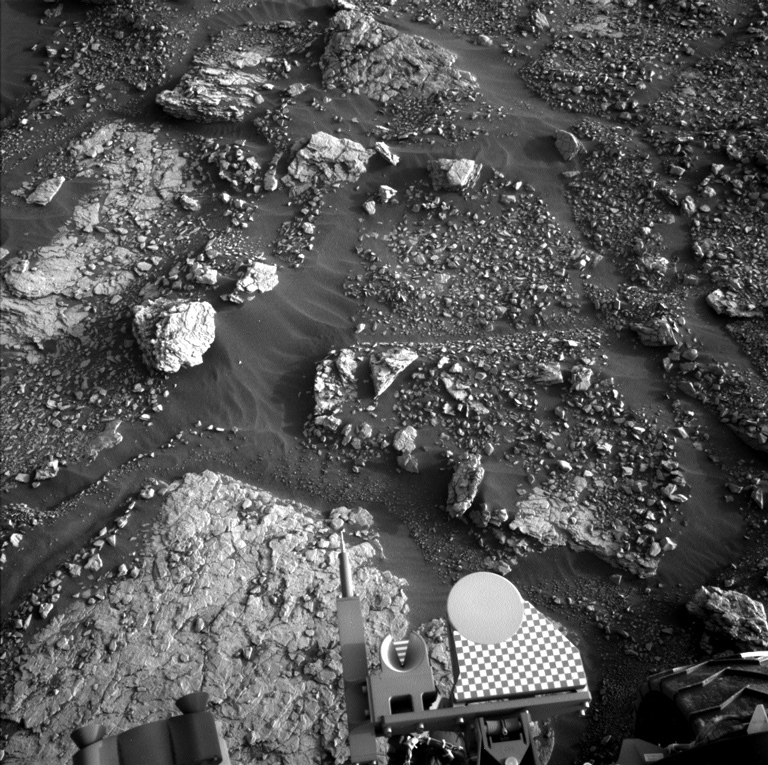2 min read

After a successful bump to our next planned drill location, Curiosity is poised to start its thorough investigation of this interesting geologic region. The team decided to perform a more detailed characterization of this location because of the presence of dark gray nodular features observed in this region. So, after maneuvering into position, Curiosity is ready to begin its characterization of the block in front of us and to prepare for drilling in the near future. After the first day’s characterization of this location, Curiosity will brush off the drill target with its Dust Removal Tool (DRT) and expose the cleaned surface for subsequent observations before drilling. In the Navcam image shown here, the selected drill location is located near the sand-free “point” of the large bedrock block just below the rover hardware at the bottom of the image.
Curiosity’s observations will include ChemCam LIBS observations of the selected drill location (named “Groken”) and two areas of an adjacent block of bedrock material (named “Hella” and “Great Skua”). These two additional LIBS chemistry observations will help to understand any potential lateral and vertical variations in geochemistry, as these targets are located very close to each other but on different sedimentary layers of the same unit.
Additional observations during this science plan include a Mastcam multispectral image of the brushed drill target (to characterize its reflectance signature and to see how it might differ from its surroundings and, eventually, its drilled interior), a high-resolution Mastcam mosaic of a nearby sediment patch to characterize any disturbances to it after drilling, and a long-distance image mosaic using the ChemCam Remote Micro-Imager.
The science team had some fun today in selecting the name “Groken” for the location planned for the next drill target. The verb “to grok” comes from Robert Heinlein’s science fiction novel “Stranger in a Strange Land,” which follows a human raised on Mars who returns to Earth to learn about human culture. Broadly, “to grok” means to understand a topic deeply, intuitively, and empathetically, which has been the goal of the Curiosity rover mission since the beginning! We’re hoping that our study of the Groken drill target will allow us to grok the ancient history of Mars in a little more detail!
Written by Mark Salvatore, Planetary Geologist at University of Michigan







